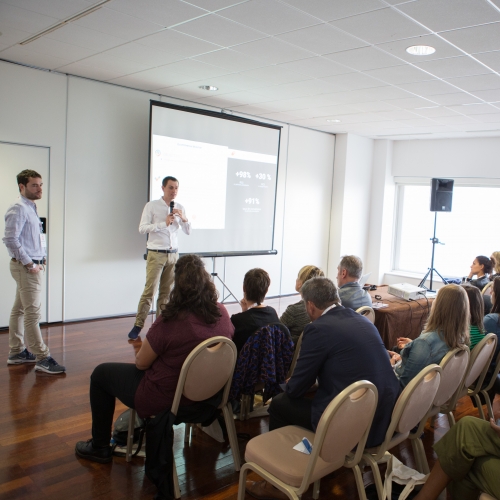Audience segmentation and personalization of messages on Google
Google searches are based on keywords and intentions. When 20 people type in a keyword for a brand offer, four profiles can be established:
- The unknown
- The customers of the sign
- Hot prospects
- Prospects
According to these profiles, it is possible to propose different answers and bids. You can, for example, change the ads for customers to perform off-sell or cross-sell, or offer a different message to hot prospects.
To segment and target the profiles, we start with the one of which we do not know anything and we buy a standard message at the cost of the click. The demographic options are then used with the next visitor, a 34-year-old, for example. With in-market audiences, Google identifies users interested in the theme of the brand based on their search history.
One can also mention similar audiences, which find users searching for keywords purchased from the Google database. On the other hand, with Customer Match, users from the brand's database are found by the search engine. It is then possible to remarket on the proven buyers. The results are convincing compared to a traditional search campaign:
- With remarketing search, the conversion rate is 30% higher on average, and the acquisition cost is 44% lower.
- With Customer Match, the conversion rate is 50% higher and the acquisition cost is 57% lower.
- With similar audiences, the conversion rate increases by 19% and the acquisition cost is reduced by 29%.
The more the knowledge of the visitors is pointed, the more it is possible to fetch the volume and decrease the cost of acquisition.
What are the latest ad formats on Google Ads?
It is important to mention the last three formats of ads made possible by Google Ads, namely ad variations, responsive search ads and smart shopping campaigns:
- Ad variations: this involves taking an existing advertisement (title and description) and creating variations by proposing several different titles or descriptions. The Google Ads platform lets you place 50% of the budget on the first campaign and the other half on the created variations. At the end of a test period, it is possible to analyze the differences in performance between the two.
- Responsive search ads: instead of creating hundreds of ads by hand, this tool allows you to write about fifteen titles, four or five descriptions and the algorithm creates all possible variations and combinations, removing those that do not. have no meaning or utility. The ads run on Google Ads themselves and you can compare the results.
- Smart shopping campaign: automated campaigns for Google Shopping. The brand provides its shopping flow and integrates it into a smart shopping campaign by targeting one of two objectives: maximizing conversions or setting a ROS (return on investment of advertising expenses). The Google algorithm takes into account user behavior and automatically pushes advertising on different channels (classic shopping, display, YouTube, etc.).
Zoom on automation
Every day on Google appear 15% of new queries due to news, but also to users for new brands, new products, new collections and new services. This finding complicates sites, options, categories and expands the volume of product references. Campaigns are therefore increasingly burdensome to manage.
Google has implemented the DSA page feed, using the product feed of a brand to find the best landing page compared to the generated queries. He then offers the best ad he thinks he can find. Compared to a non-branded search campaign, DSA page feed provides 15% more clicks, 35% more clicks, 30% lower cost-per-click, and lower acquisition cost 35%.
Machine learning, on the other hand, is the ability of computers to learn without being explicitly programmed. It is used every day with the various Google tools, for example when Gmail generates proposals for answering emails. The machine learning makes it possible to propose a different auction and to adapt in real time with regard to the various signals sent by the users.
We can mention the smart biddings, a Google auction automation solution using user data (location, time, membership of the lists of audiences), advertisers (CRM customer base, promoted promotions) and Google ( behaviors, historical, devices used). Advertisers can then define the strategy upstream and let the artificial intelligence take care of its deployment.
Finally, adwords scripts can automate simple tasks such as changing a date, updating product listings, activating or pausing campaigns from particular triggers. For example, a sports shoe dealer with more than 20,000 references at the same time in launch, in normal sale, in promotion, destocking or on sale can see each week more than 1000 products change of status.
It is not possible for humans to manage these volumes. Scripts allow you to activate ads automatically.
Speaker: Jonathan VIDOR, JVWEB et Maël BARTHELEMY, GOOGLE
SIMILAR ARTICLE
Discover the Gameloft workshop on the role of the video game in advertising
